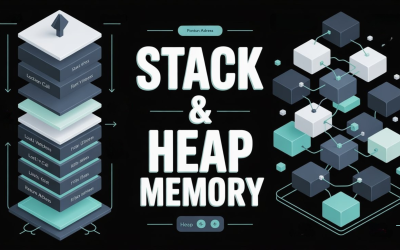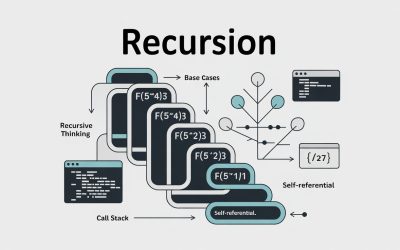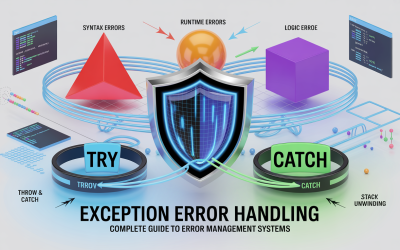Every program you run—whether it's a web browser, mobile app, or operating system—relies on stack and heap memory to function. These two memory regions form the foundation of how computers manage data during program execution. However, they couldn't be more different...
Pointer Arithmetic: Direct Memory Access
Understanding pointer programming concepts forms the foundation of efficient memory management in systems programming. Consequently, developers who master these techniques gain unprecedented control over computer memory and data structures. Furthermore, this knowledge...
Sorting and Searching: Data Organization Algorithms
Data organization forms the backbone of efficient computing. Whether you're managing a small dataset or processing millions of records, sorting and searching algorithms determine how quickly you can access and manipulate information. Furthermore, these fundamental...
Data Structures: Information Organization Systems
In the world of computer science and software development, data structures serve as the fundamental building blocks for organizing and managing information efficiently. These powerful tools enable programmers to store, retrieve, and manipulate data in ways that...
Recursion Principles: Self-Referential Problem Solving
Have you ever wondered how programmers solve seemingly impossible problems with elegant, simple code? The answer often lies in recursion programming techniques—a powerful approach that transforms complex challenges into manageable solutions. As someone who's spent...
Algorithm Complexity Analysis: A Complete Guide to Computational Efficiency
Understanding algorithm complexity analysis is crucial for developing efficient software solutions in today's competitive tech landscape. Moreover, this fundamental concept helps developers create programs that perform optimally across various computational scenarios....
String Programming Concepts: Mastering Text Processing Fundamentals
String manipulation forms the backbone of modern programming, serving as a critical skill for developers across all programming languages. Whether you're building web applications, processing data, or creating user interfaces, understanding how to work with strings...
Input Output Programming: Complete Guide to Data Communication
Modern software applications rely heavily on effective data communication between programs, users, and storage systems. Input output programming forms the backbone of this communication, enabling seamless data exchange across various computing environments....
Exception Error Handling: Complete Guide to Error Management Systems
Modern software development hinges on robust exception error handling to prevent catastrophic failures and maintain user trust. When applications crash unexpectedly, businesses lose revenue, users abandon platforms, and developers scramble to fix problems they could...










